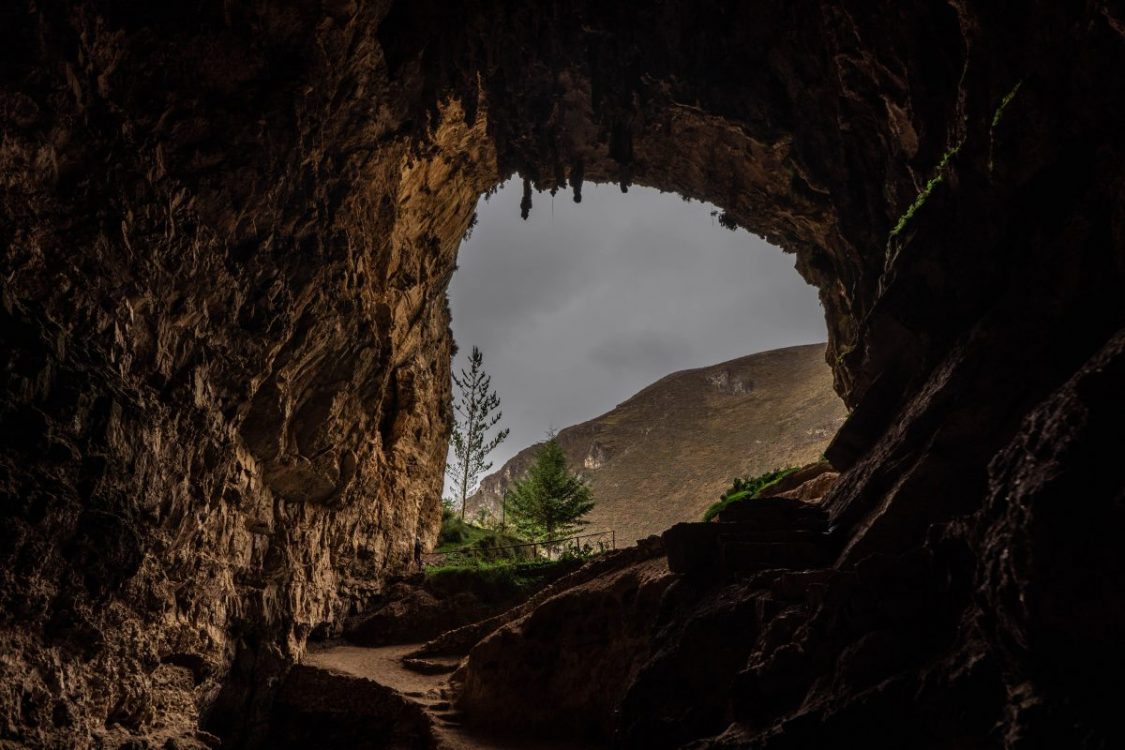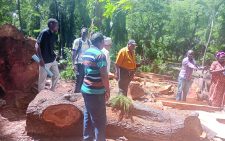Study: Human ancestors lived in Narok site a million years ago

Narok county has been placed on the global archeological map after scientists confirmed that a haul of picks, flakes, stone spearheads and hand axes found in Narok highlands were used by three species of human ancestors.
The findings by five scientists indicate the evolution of stone tool technology found at the Narok North sub-county prehistoric site were made, used and improved upon by Homo Erectus, archaic Homo Sapiens and modern Homo Sapiens starting a million years to 60,000 years ago.
The team among them Archaeologist Veronica Waweru (Snr Lecturer Yale University in US), Zoo-archaeologist Christine Ogola (NMK), geologist Christine Omuombo, Palynologist Rahab Kinyanjui (NMK) Paleontologist John Kibii (TBI) and Stephen Thomson (Computer Engineer scientist), confirmed this week that the highlands were also a potential hub of human evolution.
The discovery comes after the scientists completed a seven-year field work supported by Yale University’s MacMillan Centre, the National Geographic and the local community at Yiapan prehistoric site at Eor-Enkitok village where they established that both technological and biological evolution in this high elevation locality took place.
According to Dr Waweru, the makers of the tools likely utilised the lower-lying areas in the Rift Valley during favourable climates but shifted to the highlands on the Mau escarpment during dryer conditions. It is also possible that they were adapted to living in the Mau escarpment in Narok county.
“This excavation gave a new look at how early hominids lived on different elevations and habitats at different times in prehistory. They faced catastrophic periodic volcanic explosions but still returned to the site. Thousands of tonnes of ash would be spewed into the air and settle back on top of the landscape,” said Dr Waweru.
Dr Waweru, a Senior lecturer and Director of Undergraduate Studies Council on Africa Studies at the Yale University said the hominids still returned to this site several times due to the presence of a large water body nearby.
“In our research which we are happy to have completed today, we found a layer of volcanic ash and then vegetation would grow back on that surface. You’d get a nice soil layer, hominids would live on the land surface, and then another explosion would happen and cover it, meaning there was migration in and out of the land at different times in the last a million years,” said Dr Waweru.
In an exclusive interview with People Daily in Narok town, says the discovery along with recent findings from the Central Highlands of Kenya in Mount Kenya region, challenge the notion that the story of human origins is centered in the extensive Rift Valley.
“The Highlands were believed to have been inhospitable as they were colder and likely covered in dense forests, but this finding now mystify, that notion as the new finding stimulates a new frontier for research, especially in our ancestors’ adaptive capability and capacity to colonize new terrain during harsh climatic conditions, an indication that our ancestors also lived in elevated areas,” she said.
Dr Waweru, is an archeological anthropologist whose research interests cover prehistoric technological change and innovation in human species, focusing on highland areas. She is also passionate about involving local communities in knowledge production in prehistory research.
She says highlands, especially those above 2,500 metres above sea level are cold and can cause hypoxia due to low oxygen pressure making them less desirable to live in. They however, have more rainfall and support robust plant and animal life which the hominids would have utilized.
The team is also excited to pioneer community involvement and knowledge coproduction in prehistory research in the Yiapan site where they introduce school children and the community to their field work in order to foster discussions about human origins research and research products at a grassroots level.
“Research projects on archaeological and paleontological sites like this one unearth a lot of information on the ancient remains and this information is only shared in international publications and other media and is mostly consumed by western nations’ citizens instead of the locals who live in that land,” she added.
She said locals in areas where the investigations take place are not aware of the research sourced from their own landscape and properties and are not aware of the immense significance of the material culture found there.
“We [her team] believes it’s important to expose and explain to the local community the significance of cultural remains found on their landscape and we are working with the local Museum to put together a display of the research findings and to allow locals to engage with their ancient heritage and ask questions about the research project, this helps correct some of the wrong narratives about human evolution that exist and promotes science education,” She said.
She added that during the excavation they involve members of the community around these sites and in return they identify vulnerable cases and pay school fees for them as a way of involving them in their surroundings.
At the same time, one of the owners of the Yiapan prehistoric site, Patrick ole Yiapan, welcomed the findings and wished to conserve the site and also have it included in the local tourism circuit as well as attract more scientific attention and research.
“When I discovered the hand axe while I was grazing in December 2015 and took it to the museum of Kenya, I was just curious what it was and now you see, our land has turned to be the home of our ancestors, this is a great finding,” said Yiapan.









